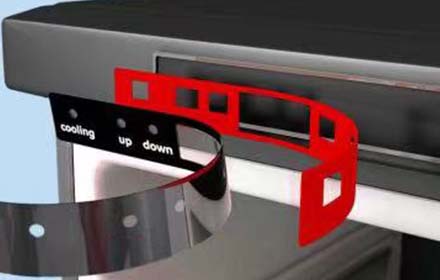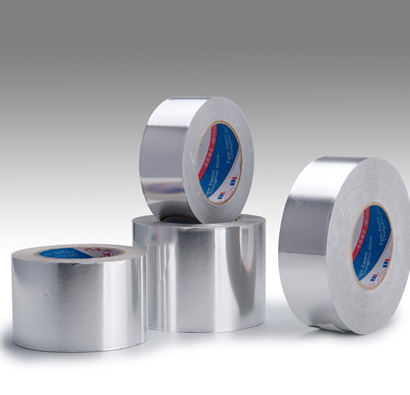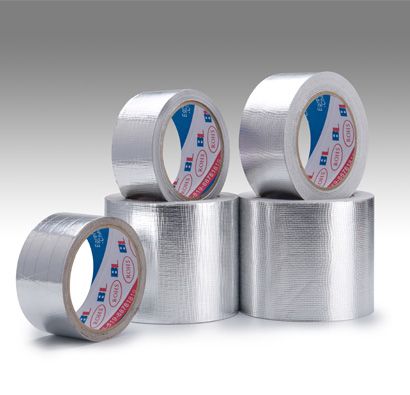
Aluminum foil tape emerges as a formidable ally in the realm of adhesive solutions, blending versatility with robust functionality. Crafted primarily from aluminum foil and adorned with an acrylic adhesive, this tape transcends mere sealing and patching duties. Its prowess extends to a myriad of applications, from fortifying HVAC systems to shielding electronics against electromagnetic interference. Join us as we delve into the multifaceted world of aluminum foil tape, exploring its heat resistance, diverse applications, and distinctive qualities.
Aluminum foil tape is a versatile adhesive tape primarily made from aluminum foil, often coated with an acrylic adhesive on one side. It's commonly used for sealing, patching, and repairing purposes due to its excellent heat resistance, moisture resistance, and durability. The tape is flexible and conforms well to irregular surfaces, making it ideal for HVAC (Heating, Ventilation, and Air Conditioning) systems, ductwork, insulation, and other applications where airtight seals are necessary. Additionally, aluminum foil tape is often utilized for shielding purposes in electrical and electronic applications to protect components from electromagnetic interference (EMI) or radiofrequency interference (RFI). Its versatility and effectiveness make it a staple in many industries and household repair kits.
Yes, aluminum foil tape is highly heat resistant, making it suitable for a wide range of applications where exposure to elevated temperatures is common. Constructed primarily from aluminum foil, which inherently possesses heat-resistant properties due to its high melting point of approximately 660.3°C (1220.5°F), this tape can withstand significant heat without melting or degrading. Additionally, the adhesive used in aluminum foil tape is specifically formulated to maintain its bond strength even at high temperatures. Typically, acrylic-based adhesives are employed, offering excellent temperature resistance. Some aluminum foil tapes also feature backing materials like polyester or polyethylene, further enhancing their heat resistance and durability. With a typical application temperature range spanning from 200°F to 600°F (93°C to 315°C), aluminum foil tape is commonly used in HVAC systems, automotive repairs, furnace insulation, and other environments where heat resistance is paramount. Its ability to withstand heat ensures reliable performance in demanding applications.

Aluminum foil tape, like HVAC aluminum foil tape, is used for a variety of purposes across different industries and applications. Some common uses include:
HVAC Systems: Aluminum foil tape is frequently used in heating, ventilation, and air conditioning (HVAC) systems for sealing ducts, air vents, and joints. It helps to create airtight seals, preventing air leaks and improving energy efficiency.
Insulation: The tape is used to secure and seal insulation materials such as fiberglass or foam board. It helps to maintain the integrity of the insulation barrier, reducing heat transfer and improving thermal efficiency.
Pipe Wrapping: Aluminum foil tape is used to wrap and seal pipes, providing protection against moisture, corrosion, and temperature fluctuations. It helps to maintain the integrity of the pipe system and prevent leaks.
Ductwork Repairs: In industrial and commercial settings, aluminum foil tape is commonly used for repairing damaged ductwork, sealing punctures, or reinforcing joints. It provides a durable and long-lasting solution for duct repairs.
Electrical Applications: The tape is used in electrical applications for shielding and grounding purposes. It helps to protect electrical components from electromagnetic interference (EMI) and radiofrequency interference (RFI).

While both aluminum foil tape and duct tape might reside in the same toolbox, their strengths and weaknesses diverge significantly. Choosing the right champion for your task requires a closer look at their individual capabilities:
Imagine a shimmering metal ribbon infused with the magical power of electricity. That's aluminum foil tape in a nutshell. Its thin aluminum core isn't just a barrier; it conducts electricity and heat with remarkable efficiency. This makes it the undisputed king of:
Electrical Mastery: Need to ground electronic components and ensure their safe operation? Aluminum foil tape creates a reliable pathway for stray currents, preventing damage. Think of it as a silent guardian, quietly diverting electrical storms away from your precious circuits.
EMI Shielding: The bane of modern electronics, electromagnetic interference (EMI), can disrupt signals and wreak havoc. But not with aluminum foil tape. Its metallic shield deflects unwanted electromagnetic waves, ensuring pristine signal integrity in your devices.
Heat Dissipation: Overheating is the enemy of electronics. Aluminum foil tape comes to the rescue by efficiently drawing heat away from components and channeling it to cooler areas. Think of it as a thermal firefighter, rushing in to quench the flames of overheating before they engulf your devices.
Beyond the electrical realm, aluminum foil tape shines in other arenas:
Reflective Brilliance: Need to keep things cool? Its shiny surface reflects heat radiation, making it a valuable asset for insulation in buildings and even spacecraft.
Leak-Sealing Hero: From leaky ducts to cracked pipes, aluminum foil tape offers a temporary yet effective seal, saving you from unwanted drips and drafty situations.
Creative Chameleon: Don't underestimate its artistic potential. Its reflective surface adds a touch of sparkle to DIY projects and art installations, turning ordinary objects into shimmering masterpieces.
However, remember, this metallic warrior's strength lies in its specialized abilities. While strong, its thinness limits its raw adhesion compared to its competitor. And its reflective beauty comes at a price – it lacks the raw strength and versatility of the next contender.
| Feature | Aluminum Foil Tape | Duct Tape |
| Conductivity | High - Ideal for electrical applications (shielding, grounding, heat dissipation) | Low - Not suitable for electrical applications |
| Reflectivity | High - Great for insulation, light control, crafting | Low - No reflective properties |
| Waterproof/Weatherproof | Good - Suitable for most conditions | Good - May withstand slightly less harsh conditions |
| Strength/Tear Resistance | Good - Tear-resistant, but weaker than duct tape | Excellent - Strong adhesion and puncture resistance |
| Ease of Application | Easy - Conforms to surfaces, leaves minimal residue | Easy - Conforms to surfaces, may leave more residue |
| Cost | High - Generally more expensive than duct tape | Low - Relatively inexpensive |
| Ideal Applications | Electrical & electronics (shielding, grounding, heat dissipation), construction & building (sealing leaks), crafting (reflective accents) | General repairs, bundling & securing, temporary fixes, emergency situations |
| Considerations | Residue upon removal, higher cost | Temperature resistance, permanent adhesion |
| Additional Notes | Thin aluminum layer | Thick fabric base & strong adhesive |
| Can reflect heat back for insulation | Not conductive | |
| Can be used for temporary fixes in harsh conditions | Leaves more residue upon removal |
If aluminum foil tape is the electrical maestro, duct tape is the rugged adventurer, ready to tackle any physical challenge. Its thick fabric base and potent adhesive are legendary for:
Unbeatable Adhesion: Whether it's patching a ripped tent, bundling cables, or holding together a makeshift emergency fix, duct tape's grip is legendary. Think of it as the ultimate fixer-upper, ready to mend virtually anything with its sticky embrace.
Puncture-Proof Champion: Sharp edges and unexpected tears hold no fear for duct tape. Its robust fabric shrugs off punctures and abrasions, keeping your patched-up world intact.
Strength in Simplicity: Don't underestimate the power of simplicity. Duct tape's straightforward design - a strong fabric base coated in a tenacious adhesive - makes it easy to use and adaptable to almost any surface.
But duct tape's strength comes with limitations:
Electrical Isolation: Unlike its aluminum counterpart, duct tape is an electrical insulator. While this keeps you safe from accidental zaps, it also renders it useless for any tasks requiring conductivity.
Reflective Shy Guy: Don't expect dazzling displays of light reflection from duct tape. Its dull exterior keeps it firmly grounded in the realm of practical applications.
Residue Remorse: While its adhesion is impressive, its removal can leave behind unwanted traces. Beware of using it on delicate surfaces where a permanent sticky souvenir might be unwelcome.
So, there you have it - two champions with distinct strengths and weaknesses. When conductivity, reflectivity, or weatherproof seals are your needs, aluminum foil tape takes the stage. But for raw strength, adaptability, and quick fixes, duct tape becomes the unsung hero. Choose wisely, and let the right champion lead you to success in your next project!
In the tapestry of adhesive wonders, aluminum foil tape stands as a versatile marvel, weaving together heat resistance, conductivity, and durability into a formidable ally. From fortifying HVAC systems to safeguarding delicate electronics, its applications are as diverse as they are indispensable. While its counterparts may boast strength or simplicity, aluminum foil tape reigns supreme in specialized realms, offering a blend of functionality and finesse unmatched by its peers. As we bid adieu, let this versatile marvel illuminate your next project, guiding you through the labyrinth of adhesive solutions with unwavering brilliance.